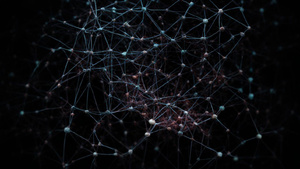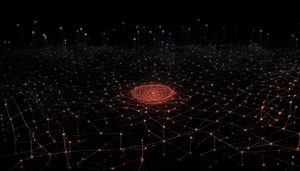Dimensionality Reduction: Factor Analysis

Factor analysis is a powerful technique used in the field of machine learning and statistics for dimensionality reduction. It helps us to uncover the latent variables (factors) that explain the correlations among observed variables. This method aims to reduce the number of features while retaining as much variance in the data as possible.
Key Concepts:
Observed Variables: These are the original features or variables present in the dataset, which can be directly measured.
Latent Variables: Also known as factors, these are unobserved variables that cannot be measured directly but play a crucial role in explaining patterns and relationships within the data.
Eigenvalues and Eigenvectors: In factor analysis, eigenvalues represent the amount of variance explained by each latent factor, while eigenvectors indicate how much each observed variable contributes to that factor.
Loading: Loadings show how strongly each observed variable is related to a particular factor. High loading values suggest a strong relationship between the variable and factor.
Applications:
Dimensionality Reduction: Factor analysis helps in reducing high-dimensional data into a smaller set of meaningful factors without losing essential information.
Data Visualization: By representing data points in terms of their underlying factors, it becomes easier to visualize complex datasets and identify patterns.
Identifying Relationships: Factor analysis can reveal hidden relationships among variables that may not be obvious from simple correlation analyses.
Steps Involved:
Collect Data: Start with a dataset containing multiple observed variables for which you want to uncover underlying factors.
Perform Factor Analysis:
- Determine the number of factors based on criteria like Kaiser's criterion or scree plot.
- Choose an extraction method (e.g., principal component analysis PCA or common factor analysis).
- Interpret results like eigenvalues, loadings matrix, communalities, etc.
Evaluate Results:
- Analyze how well identified factors explain variance in the data.
- Assess model fit using measures like RMSEA (Root Mean Square Error of Approximation) or CFI (Comparative Fit Index).
Apply Findings:
- Use derived factors for subsequent modeling tasks such as clustering, classification or regression.
In conclusion, dimensionality reduction through factor analysis is a valuable tool for understanding complex datasets by identifying key underlying structures and reducing redundancy across multiple features effectively.
Sponsored
Sponsored
Sponsored
Explore More:

Model Evaluation and Selection
Topic model evaluation and selection are crucial steps in the process of building...

Feature Engineering
Feature engineering is the process of selecting, creating, and transforming features (inputs) in...

Natural Language Processing (NLP)
Natural Language Processing (NLP) is a subfield of artificial intelligence that focuses on...

Neural Networks and Deep Learning
Neural networks are a class of algorithms modeled after the human brain's neural...

Reinforcement Learning
Reinforcement learning is a branch of machine learning concerned with how intelligent agents...

Dimensionality Reduction: Autoencoders
Autoencoders are a type of artificial neural network used for learning efficient representations...

Dimensionality Reduction: Independent Component Analysis (ICA)
Independent Component Analysis (ICA) is a dimensionality reduction technique commonly used in machine...

Dimensionality Reduction: t-Distributed Stochastic Neighbor Embedding (t-SNE)
Dimensionality reduction is a fundamental technique in machine learning and data visualization that...

Dimensionality Reduction: Principal Component Analysis (PCA)
Principal Component Analysis (PCA) is a popular dimensionality reduction technique used in machine...

Unsupervised Learning: Dimensionality Reduction
Unsupervised learning dimensionality reduction is a crucial concept in machine learning that deals...

Clustering: Gaussian Mixture Models
Clustering is a fundamental unsupervised learning technique used to identify inherent structures in...

Clustering: DBSCAN
DBSCAN (Density-Based Spatial Clustering of Applications with Noise) is a popular clustering algorithm...

Clustering: Hierarchical Clustering
Hierarchical clustering is a popular unsupervised machine learning technique used to group similar...

Clustering: K-Means
Clustering is an unsupervised machine learning technique that aims to partition a set...

Unsupervised Learning: Clustering
Unsupervised learning clustering is a fundamental concept in machine learning that involves identifying...

Unsupervised Learning
Unsupervised learning is a type of machine learning where the model is trained...